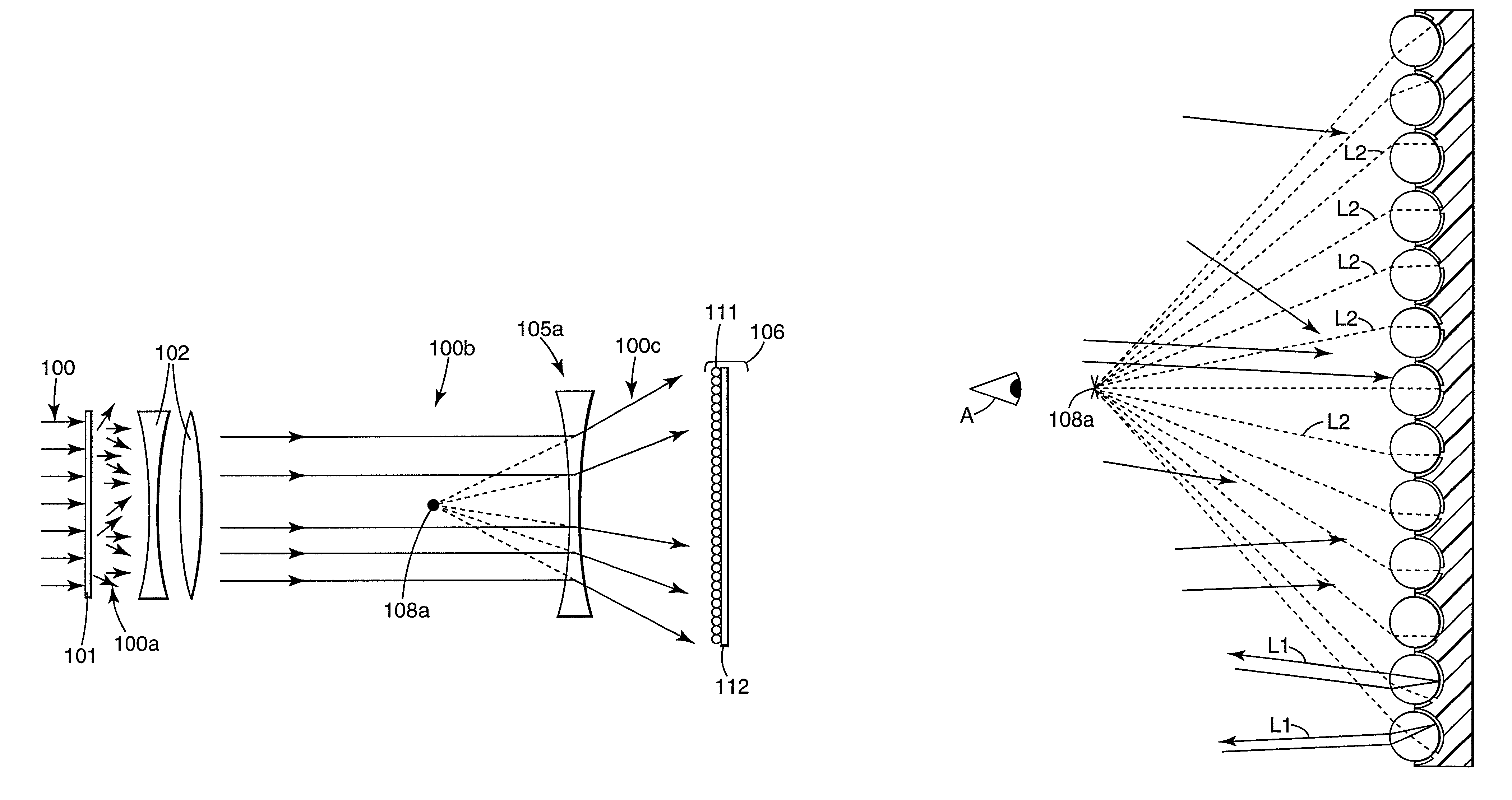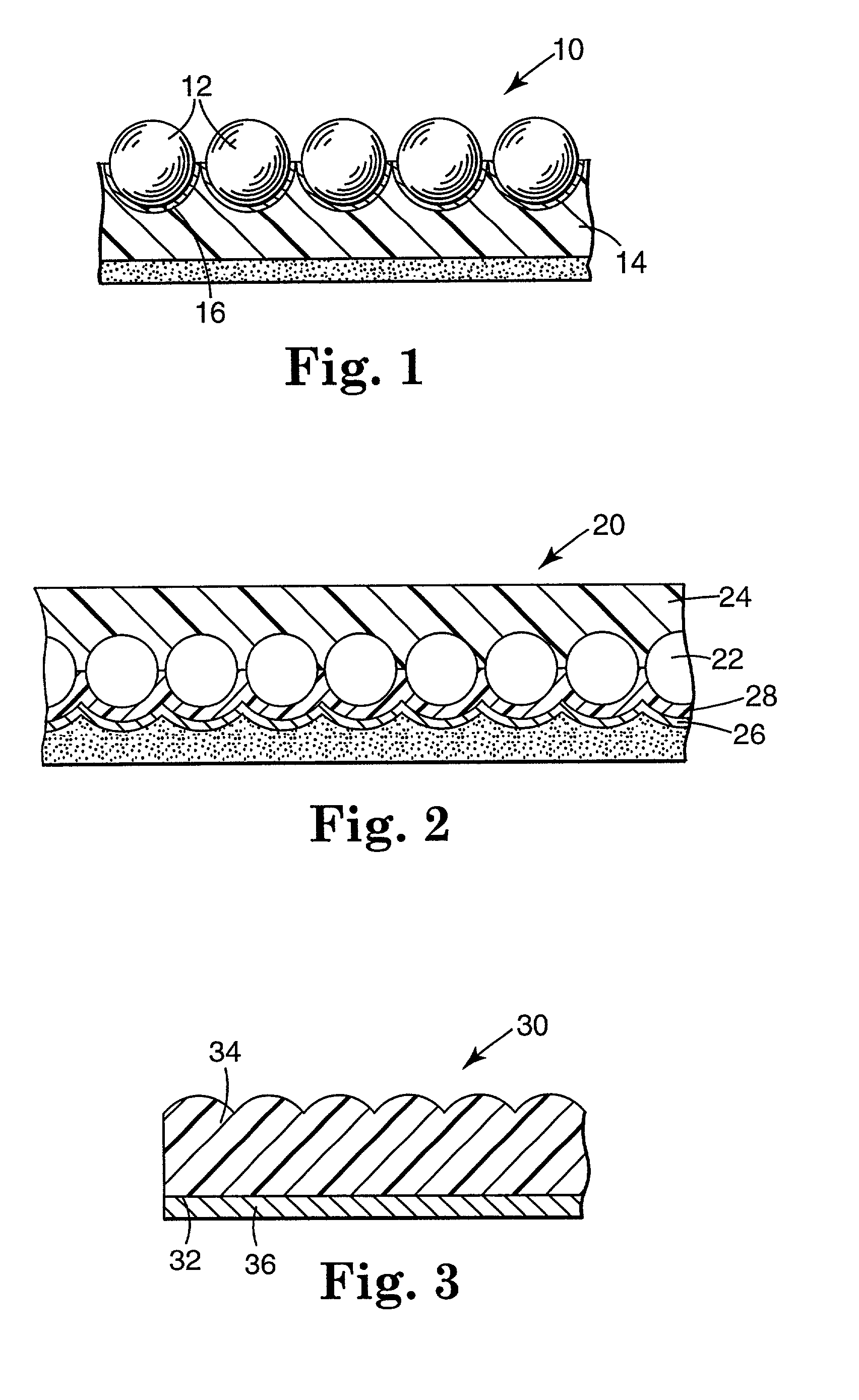Sheeting with composite image that floats
a composite image and image technology, applied in the field of sheeting, can solve the problems of unadaptable methods for producing three-dimensional images of virtual objects, image must be illuminated,
- Summary
- Abstract
- Description
- Claims
- Application Information
AI Technical Summary
Benefits of technology
Problems solved by technology
Method used
Image
Examples
examples
[0074]This invention will be further explained by the following Examples, which may for convenience reference certain of the Figures.
example one
[0075]This example describes an embedded lens sheeting with an aluminum material layer, and a composite image that appeared to float above the sheeting. An optical train of the type depicted in FIG. 14 was used to form the floating image. The optical train consisted of a Spectra Physics Quanta-Ray™ DCR-2(10)Nd:YAG laser 300 operating in a Q-switched mode at its fundamental wavelength of 1.06 micrometers. The pulse width of this laser is typically from 10–30 ns. Following the laser, the energy was redirected by a 99% reflective turning mirror 302, a ground glass diffuser 304, a 5× beam expansion telescope 306, and an aspheric lens 308 with a numerical aperture of 0.64 and a focal length of 39.0 mm. The light from the aspheric lens 308 was directed toward an XYZ stage 310. The stage was composed of three linear stages, and is available from Aerotech Inc. of Pittsburgh, Pa. under the designation ATS50060. One linear stage was used to move the aspheric lens along the axis between the as...
example two
[0080]In this example, an exposed lens sheeting construction with a transparent mirror radiation sensitive layer was used to form a composite image that appeared to float below the microlens sheeting. The optical train used in Example One was also used in this Example. The microlensed sheeting was positioned relative to the aspheric lens 308 so that the lens was nearly in contact with the microlens sheeting. The laser output was adjusted to achieve approximately 14 mJ / cm2 directly beneath the aspheric lens. The exposed lens sheeting consisted of partially embedded microspheres as described in U.S. Pat. No. 3,801,183, with a zinc-sulfide (ZnS) dielectric mirror vapor deposited onto one side of the microspheres. The thickness of the ZnS layer was nominally 60 nm. As in Example One, the laser was operated at 10 Hz while the sheeting was moved at 50.8 cm / min, resulting in the formation of continuous composite lines in the microlensed sheeting. A “globe” pattern (a circle with four inscr...
PUM
| Property | Measurement | Unit |
|---|---|---|
| refractive index | aaaaa | aaaaa |
| refractive index | aaaaa | aaaaa |
| diameters | aaaaa | aaaaa |
Abstract
Description
Claims
Application Information
 Login to View More
Login to View More - R&D
- Intellectual Property
- Life Sciences
- Materials
- Tech Scout
- Unparalleled Data Quality
- Higher Quality Content
- 60% Fewer Hallucinations
Browse by: Latest US Patents, China's latest patents, Technical Efficacy Thesaurus, Application Domain, Technology Topic, Popular Technical Reports.
© 2025 PatSnap. All rights reserved.Legal|Privacy policy|Modern Slavery Act Transparency Statement|Sitemap|About US| Contact US: help@patsnap.com



